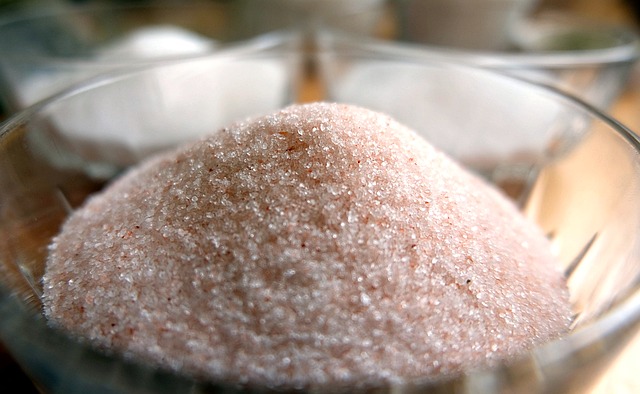 It is summer again and with Sacramento summers come lots of heat. We have been having a record-breaking heatwave this year all up and down the west coast. Glitches in the Jet Stream high up in the upper atmosphere have created a stagnant high-pressure system that stalled over the west coast for far too long. Crazy temperatures showed such extremes as 115 degrees in Seattle on a day that traditionally runs around 74 degrees. My son Devon lives there, and he says no one has air conditioning as they have never needed it – until now.
It is summer again and with Sacramento summers come lots of heat. We have been having a record-breaking heatwave this year all up and down the west coast. Glitches in the Jet Stream high up in the upper atmosphere have created a stagnant high-pressure system that stalled over the west coast for far too long. Crazy temperatures showed such extremes as 115 degrees in Seattle on a day that traditionally runs around 74 degrees. My son Devon lives there, and he says no one has air conditioning as they have never needed it – until now.
 Our body responds to this heat by trying to cool us down through the evaporation of perspiration on our skin. This is a good thing, except this process causes us to excrete a lot of our electrolytes along with the sweat. Electrolytes, what are those? Our body is both electrical and chemical in nature. Electrolytes are the elements that act as the carriers of electrical charge from one place to another, very much like inside a battery. There are six basic electrolytes that are most important to our body. They are:
Our body responds to this heat by trying to cool us down through the evaporation of perspiration on our skin. This is a good thing, except this process causes us to excrete a lot of our electrolytes along with the sweat. Electrolytes, what are those? Our body is both electrical and chemical in nature. Electrolytes are the elements that act as the carriers of electrical charge from one place to another, very much like inside a battery. There are six basic electrolytes that are most important to our body. They are:
Sodium – like in salt – need 2300 mg
Potassium – like in vegetables – need 2600 mg
Calcium – like in bones – need 1200 mg
Magnesium – also in plants – need 300 to 400 mg
Chloride – like in salt – need 2300 mg
Phosphate – like in meats – need 700 mg
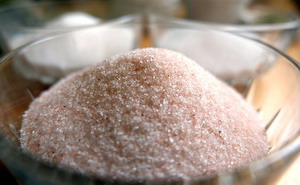 These guys, plus various trace minerals, serve to move electricity in the form of electrons around the body. They create electrical charges on cell membranes and on all the protein structures in the body which causes everything to happen in the body. A nerve impulse is just the movement of sodium and calcium ions as they trade places on the nerve cell membrane. Muscle contraction is another movement of protein chains caused by calcium release and the action of phosphate in the form of ATP. Every thought you think and every move you make happens because of electrolytes.
These guys, plus various trace minerals, serve to move electricity in the form of electrons around the body. They create electrical charges on cell membranes and on all the protein structures in the body which causes everything to happen in the body. A nerve impulse is just the movement of sodium and calcium ions as they trade places on the nerve cell membrane. Muscle contraction is another movement of protein chains caused by calcium release and the action of phosphate in the form of ATP. Every thought you think and every move you make happens because of electrolytes.
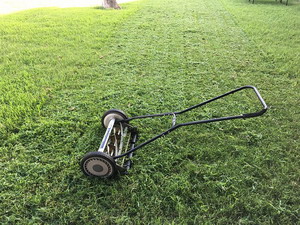 Our need for these electrolytes is continuous because we are constantly losing them through urine, sweat, and feces. The sweat loss is why these become especially important in the summer months. After a busy day out in the yard on a hot day, I will see my skin literally turn powdery white due to all the salts that are excreted in my sweat and left on the skin after the water evaporates. When we get low in electrolytes, things don’t work well in the body. Some sample symptoms are:
Our need for these electrolytes is continuous because we are constantly losing them through urine, sweat, and feces. The sweat loss is why these become especially important in the summer months. After a busy day out in the yard on a hot day, I will see my skin literally turn powdery white due to all the salts that are excreted in my sweat and left on the skin after the water evaporates. When we get low in electrolytes, things don’t work well in the body. Some sample symptoms are:
Restlessness
Muscle cramps
Constant or frequent headaches
Feelings of anxiety
Insomnia or difficulty sleeping
Constant thirst
Irregular heartbeat or palpitations
Changes in blood pressure
Fevers
Confusion and difficulty retaining focus
Bone and joint pain
Digestive difficulties such as diarrhea, cramping, and constipation
Loss of appetite and weight loss
Chronic fatigue
Dizziness
Hot weather is not the only reason for such symptoms, some medications also set us up for electrolyte loss. High blood pressure meds, birth control pills, cholesterol-lowering drugs, insulin, and beta-agonist asthma meds all increase the likelihood of symptoms.
 A couple of diagnostic signs to pay attention to are leg cramps at night. These are usually due to low calcium levels. A little test is to tap on the temple and see if the muscles around the eye or mouth make a quick squeeze movement. This is called a Chvostek’s sign. Here is a short video of this test.
A couple of diagnostic signs to pay attention to are leg cramps at night. These are usually due to low calcium levels. A little test is to tap on the temple and see if the muscles around the eye or mouth make a quick squeeze movement. This is called a Chvostek’s sign. Here is a short video of this test.
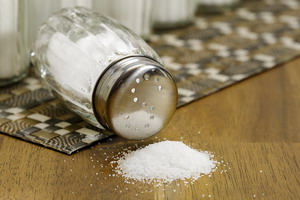 Low salt levels create low blood pressure, just as high salt levels can raise blood pressure. Low salt levels will also decrease hydrochloric acid in the stomach leading to poor digestion and GERD symptoms. Common signs and symptoms of potassium deficiency include weakness and fatigue, muscle cramps, muscle aches and stiffness, tingles and numbness, heart palpitations, breathing difficulties, digestive symptoms, and mood changes. Low phosphate levels have a similar list with the addition of bone pain and bone weakness as calcium phosphate is the key mineral in bones. Low magnesium levels generally begin with a loss of appetite and possible nausea/vomiting leading to weakness, fatigue, muscle cramps, high blood pressure, irregular heart rhythms, tingling, numbness, and personality changes. As I said, electrolytes are pretty important to our health.
Low salt levels create low blood pressure, just as high salt levels can raise blood pressure. Low salt levels will also decrease hydrochloric acid in the stomach leading to poor digestion and GERD symptoms. Common signs and symptoms of potassium deficiency include weakness and fatigue, muscle cramps, muscle aches and stiffness, tingles and numbness, heart palpitations, breathing difficulties, digestive symptoms, and mood changes. Low phosphate levels have a similar list with the addition of bone pain and bone weakness as calcium phosphate is the key mineral in bones. Low magnesium levels generally begin with a loss of appetite and possible nausea/vomiting leading to weakness, fatigue, muscle cramps, high blood pressure, irregular heart rhythms, tingling, numbness, and personality changes. As I said, electrolytes are pretty important to our health.
 Traditionally sodium was difficult to come by in nature, so our bodies evolved to salvage sodium at the kidneys by sacrificing potassium. Back then our diets provided us with plenty of potassium. These days the reverse is true. Salt is readily available and in everything we eat, while the potassium from plants is usually low in the average American diet. We are not eating pounds of plants every day like we used to. That ancient diet also provided us with lots of magnesium. Now we consume so little that magnesium is considered the most common nutrient deficiency in the American diet. Seriously, the majority of the calories in the American diet come from sugar, processed flours, and vegetable oils. None of these contain any electrolytes. The bottom line here is that most of us have electrolyte deficiencies of one sort or another.
Traditionally sodium was difficult to come by in nature, so our bodies evolved to salvage sodium at the kidneys by sacrificing potassium. Back then our diets provided us with plenty of potassium. These days the reverse is true. Salt is readily available and in everything we eat, while the potassium from plants is usually low in the average American diet. We are not eating pounds of plants every day like we used to. That ancient diet also provided us with lots of magnesium. Now we consume so little that magnesium is considered the most common nutrient deficiency in the American diet. Seriously, the majority of the calories in the American diet come from sugar, processed flours, and vegetable oils. None of these contain any electrolytes. The bottom line here is that most of us have electrolyte deficiencies of one sort or another.
 The all-American answer to this problem is florescent colored sports drinks that are mainly filled with sugar and a little salt and potassium. I checked out the most popular version and it contained 34 grams of sugar – that is 8 ½ teaspoons of sugar per bottle, which is about the total amount of sugar our body can process without damage in a 24 hour period. We need electrolytes, but not at that level of accompanying damage. The problem is not just the sugar. The food dyes that give the drinks their color create a host of other problems. Food dyes bind to the proteins you eat blocking their absorption. Without proper absorption, they become fertilizer for toxic gut bacteria which produce poisons that punch holes in your gut lining and mess with your immune system and brain functioning. The same problem is also found in the coloring to make Froot Loops cereal, popsicles, Jello, and most other packaged food products.
The all-American answer to this problem is florescent colored sports drinks that are mainly filled with sugar and a little salt and potassium. I checked out the most popular version and it contained 34 grams of sugar – that is 8 ½ teaspoons of sugar per bottle, which is about the total amount of sugar our body can process without damage in a 24 hour period. We need electrolytes, but not at that level of accompanying damage. The problem is not just the sugar. The food dyes that give the drinks their color create a host of other problems. Food dyes bind to the proteins you eat blocking their absorption. Without proper absorption, they become fertilizer for toxic gut bacteria which produce poisons that punch holes in your gut lining and mess with your immune system and brain functioning. The same problem is also found in the coloring to make Froot Loops cereal, popsicles, Jello, and most other packaged food products.
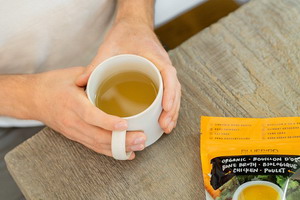 So, what can you do to meet your need for electrolytes? The natural sources would be foods like bone broth, fresh vegetables, or pastured meats. For some people milk products are good, and coconut water is popular. Fruit juices have some benefits, but the sugar levels generally make them a bad choice. Electrolyte powders added to water can be a good choice if they are unsweetened or sweetened only with stevia or monk fruit. Powders can often provide a more optimized mix of electrolytes for rapid replenishment.
So, what can you do to meet your need for electrolytes? The natural sources would be foods like bone broth, fresh vegetables, or pastured meats. For some people milk products are good, and coconut water is popular. Fruit juices have some benefits, but the sugar levels generally make them a bad choice. Electrolyte powders added to water can be a good choice if they are unsweetened or sweetened only with stevia or monk fruit. Powders can often provide a more optimized mix of electrolytes for rapid replenishment.
This review of electrolytes points out how important the details are in any nutrition program you are on. If you are not feeling your best, start simply by supporting the energy pathways in your body. Those pathways begin with the right amounts of the right electrolytes.
Take care,
David
